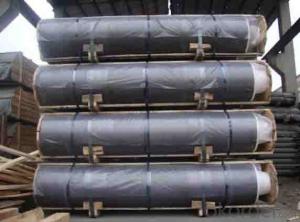When we talk about graphite electrodes, we’re diving into a world that’s both fascinating and incredibly important in the realm of material science. These little marvels are the unsung heroes of many industries, and yet, they’re often overlooked. But not today! Today, we’re going to shed some light on these graphite wonders and explore their science, their applications, and why they matter so much.
Graphite, at its core, is a form of carbon. Yes, the same element that makes up the pencil you used in school. But don’t be fooled by its humble beginnings; graphite has some extraordinary properties that make it perfect for use as an electrode. It’s got this uncanny ability to conduct electricity, which is a big deal in the world of batteries, fuel cells, and more. But that’s not all; it’s also got a high melting point and is incredibly resistant to corrosion. These traits make it a top contender in the material science arena.
Let’s start with the basics. Graphite is made up of layers of carbon atoms arranged in a hexagonal lattice. These layers are held together by weak forces, which allows them to slide past each other easily. This is what gives graphite its slippery feel and makes it great for use in lubricants. But when it comes to electrodes, it’s the electrical conductivity that steals the show.
Now, when graphite is used as an electrode, it’s typically in the form of a rod or a block. These electrodes are used in a variety of applications, from electric arc furnaces to help produce steel, to batteries that power our devices. In electric arc furnaces, graphite electrodes play a crucial role in melting the scrap metal. They’re able to withstand the intense heat and electrical currents required for the process.
In the world of batteries, graphite electrodes are used in lithium-ion batteries, which are the workhorses of our portable electronics. They provide the negative electrode, or anode, in these batteries. The lithium ions move from the cathode to the anode during discharge, and back again during charge. Graphite’s ability to host these lithium ions without deteriorating makes it an ideal material for this purpose.
But it’s not just about the properties of graphite itself. The way these electrodes are made can also have a significant impact on their performance. There are different methods for producing graphite electrodes, including the use of synthetic graphite, which is made from petroleum coke or coal tar pitch, or natural graphite, which is derived from mined graphite. Each method has its pros and cons, and the choice depends on the specific application and desired properties.
Synthetic graphite is known for its purity and consistency, which can lead to better performance in certain applications. However, natural graphite has its own advantages, such as lower cost and less environmental impact. The debate between synthetic and natural graphite is ongoing, with researchers constantly looking for ways to improve the properties of both types.
One of the challenges in using graphite electrodes is their susceptibility to oxidation at high temperatures. This can lead to a reduction in performance over time. To combat this, researchers are exploring the use of coatings and additives to enhance the electrodes’ resistance to oxidation. These innovations aim to extend the life of the electrodes and improve their overall performance.
Another area of interest is the development of graphene-based electrodes. Graphene, a single layer of carbon atoms arranged in a two-dimensional lattice, has been making waves in the material science community due to its exceptional properties. It’s incredibly strong, lightweight, and has a high surface area. When used in electrodes, it can potentially offer improved conductivity and energy storage capabilities.
As we look to the future, the demand for advanced materials is only going to increase. With the push for more efficient energy storage and cleaner energy production, graphite electrodes are poised to play a significant role. From advancements in battery technology to the development of new applications in industries like aerospace and automotive, the potential for graphite electrodes is vast.
In conclusion, graphite electrodes are more than just a material; they’re a key component in the ever-evolving world of material science. Their unique properties and versatility make them indispensable in a variety of applications. As we continue to innovate and push the boundaries of what’s possible, the role of graphite electrodes is only going to grow. So, the next time you’re using a device powered by a lithium-ion battery or marveling at the production of steel, take a moment to appreciate the humble graphite electrode, the unsung hero behind the scenes.

